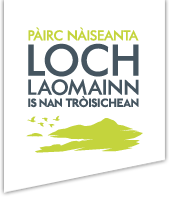
National Park moves closer to Net Zero
Loch Lomond & The Trossachs National Park Authority is taking an important step forwards on its journey to Net Zero, with a £1.6m investment across its facilities this winter.
The National Park Authority has committed to becoming a Net Zero organisation by 2030 and a range of measures is being employed to reduce emissions including solar panels, air source heat pumps and electric vehicles for Park Rangers.
Scotland’s first National Park covers 720 square miles and the Park Authority manages visitor facilities, offices and a fleet of vehicles to patrol the vast area.
A grant from the Scottish Government’s Public Sector Heat Decarbonisation Fund (£1,129,200) will enable works this winter at National Park Headquarters in Balloch, Loch Chon campsite, Balmaha Visitor Centre and Duncan Mills Memorial Slipway.
Meanwhile, a grant from Transport Scotland’s Switched on Fleet Fund (£300,000) is set to provide EV charging infrastructure at various sites across the National Park to support the transition of the Park Authority’s vehicle fleet to electric vehicles.
It will also be made easier for visitors to embrace low emissions travel, with upgrades in the pipeline for visitor sites in the National Park. Six EV charging points will be installed next summer at the popular Tarbet Visitor Site, as part of a comprehensive plan to transform the site into a sustainable travel hub.
Gordon Watson, Chief Executive of Loch Lomond & The Trossachs National Park Authority said: “The scale and urgency of the climate and nature crises mean that significant change is required to protect the National Park’s people and places and ensure they can thrive in the future.
“It is important that we lead by example and this work to reduce our emissions allows us to get our own house in order as we start to consider wider ambitions for the whole National Park, as a place, to reach net zero emissions.
“We have already made progress in reducing emissions across our estate and this upcoming work to embrace renewable technologies for our buildings and facilities will take us a step closer to reaching net zero, our Mission Zero.”
Work this winter includes a major upgrade to energy and heating systems at National Park Headquarters in Balloch – featuring solar panels, a solar car port, e-bike station and air source heat pumps/heating system upgrades. This will save an estimated 21tCO2e (carbon tonnes) per year, the equivalent of 90,000 miles in a petrol car.
The installation of solar panels and batteries at Loch Chon Campsite will save an estimated 2tCO2e per year, the equivalent of 8,500 miles in a petrol car and electrical upgrades will be made at Balmaha Visitor Centre and Duncan Mills Memorial Slipway.
Vehicles used by Park Rangers are gradually being replaced with electric vehicles, including the addition of a fully electric boat to the National Park Authority’s marine fleet. Three times more efficient than a traditional petrol or diesel boat, the electric maintenance boat is almost silent as it moves across Loch Lomond, creating less disturbance to surrounding wildlife and zero water pollution.
By 2030, the National Park Authority will have reduced the carbon emissions produced from transport, heating and electricity as far as possible and will balance the remainder, if required, by investing in the National Park’s natural environment.
The scale and urgency of the climate and nature crises are the main drivers for the next five-year plan for the National Park, the National Park Partnership Plan
Following a public consultation, the Park Authority is working to finalise the plan, which is expected to be launched in Spring 2024 following approval by the National Park Board and Scottish Ministers.
The Park Authority’s Mission Zero work has been shortlisted for this year’s Nature of Scotland awards, which celebrate individuals, communities and organisations making a difference to protect and restore the natural environment.
More information on Mission Zero can be found here

